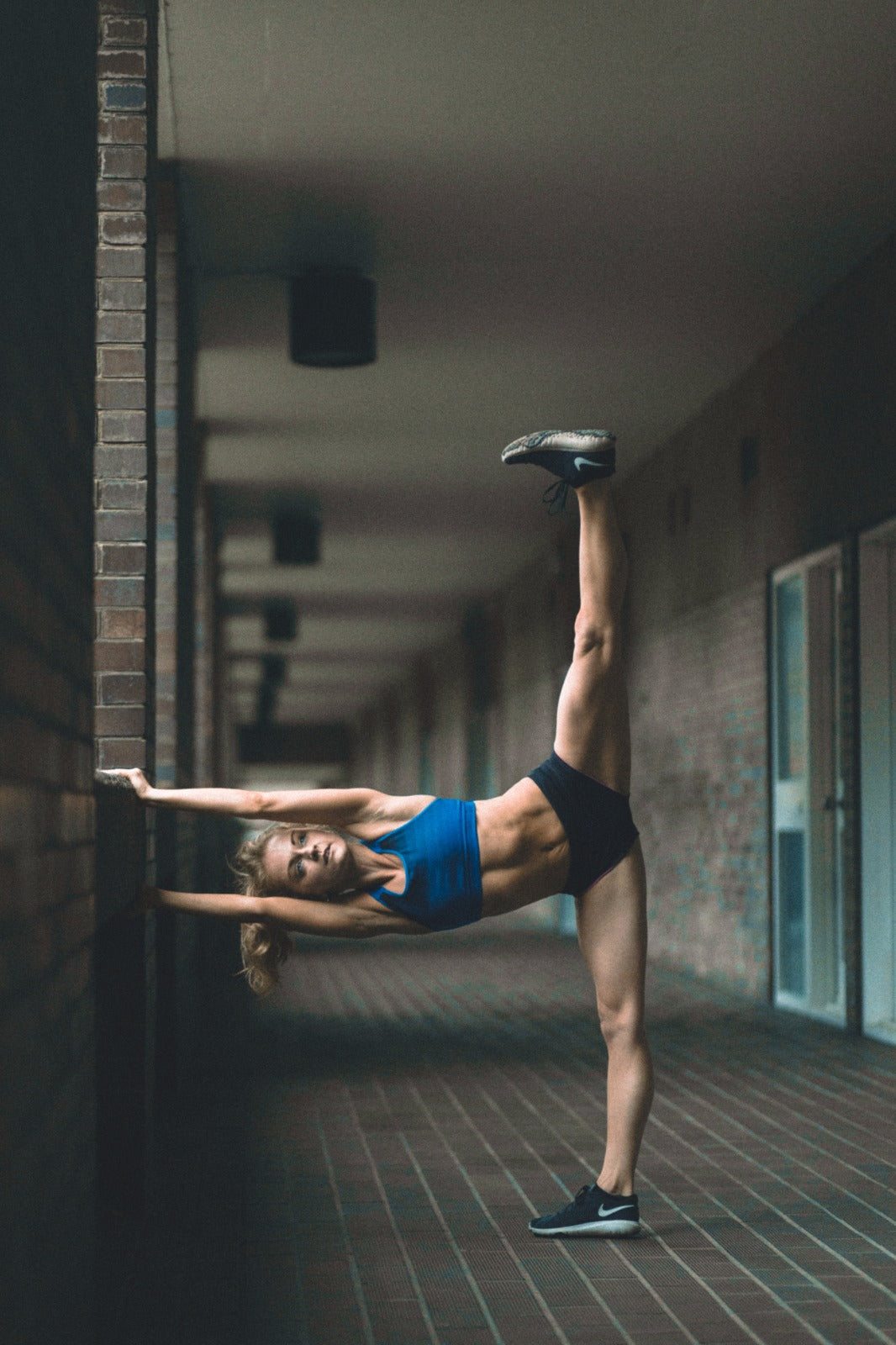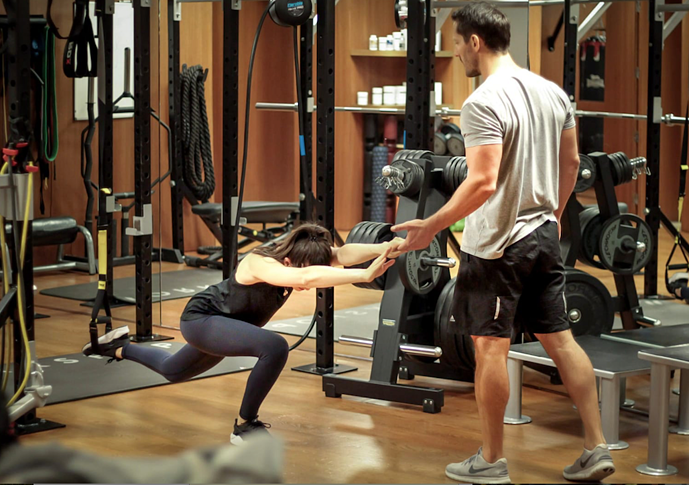Functional movements. What does this really mean? What makes movement functional ? Is it the number of times you do it? Is it a piece of equipment you're using? The reps? Sets? Are functional movements the ones that our fitness instructor's say they are, just because they say so? This can certainly be confusing and understandably so. Functional movements can mean many things to many people at many different times...enter TRX's Foundational Movements (FM).
At TRX we believe functional movements consist of any movement performed to complete a useful task. This can mean anything from body weight training to improve resiliency or something as simple as performing a household chore. In order to understand, teach, and train complex functional movements, we must break down larger movements into what we call our TRX Foundational Movements.

So with that being said, let's actually break down what TRX considers foundational movements. Currently, TRX recognizes the following as a functional movement pattern: squat, pull, hinge, push, lunge, rotate, and plank. Plank being at the top of the triangle because without a proper plank, all other movements don't have a foundation to work off. A plank can be defined as having a stable spine, body in full alignment with no movement.
A squat would be defined as having a stable spine, a stable upper body, while the hips, knees and ankles are mobile. Pulling would have a stable spine, stable lower body, while the upper joints of shoulders, elbows and wrists being mobile. Does this start to make sense?
The most important thing to recognise is that these seven movements are the foundation of ALL MOVEMENTS. These are the movements we use in our day to day lives, as well as in any sport or gym setting. This is the exact reason TRX has deemed these movements as its Foundational Movements (FM).

If you've already set out on TRX's Education Journey, then you've been introduced to these Foundational Movements, as well as some of the signature language that accompanies our TRX training philosophies. You'll likely know that one of our main takeaways from a coaching course is the concept of what is stable vs. what is mobile, all being discussed in relation to the plank...TRX's hero movement.
Also, to elevate our class participants to become better coaches, we talk about the standard of each movement(another TRXism) and how this must be mastered. This helps TRX qualified instructors explain the proper standards to each client as they progress each exercise to more challenging levels, or "changing the condition" as we at TRX would say.. This means changing the load and/or tempo of each movement, and in some cases the functional training tool being used (i.e. Slam Ball vs. Power Bag).
When someone walks away from a TRX education course, we are confident they have been given the tools they need to confidently and accurately coach their clients and class participants in a way that they can understand and apply in their everyday life.
However this journey continues, just as anything in life expands and keeps moving. As our TRX Senior Instructor and Clinical Physical Therapist, Chris Nentarz says, "Even if you're on the right track, you have to keep moving... If you stand still, you'll eventually get run over."
This brings us to the introduction of the functional training pyramid (rather than a triangle). How does this pyramid take shape, you ask? By the expansion and progression of the TRX Foundational Movements themselves.
INTRODUCING: BEND, TWIST, STEP, AND CRAWL
How did these additional or progressed foundational movements come to be? Before we answer that, let's first talk about how these additions will play into building an even stronger movement foundation and why they are important to overall fitness and wellness. The Bend, Twist, Step, and Crawl movements are especially great at helping increase our ability to use the transverse plane and utilize segmental mobility. So what does that really mean?
If a fitness instructor or personal trainer took a casual survey of what their classes and clients favorite exercises were, the winning exercises would likely be a dumbbell row (or some variation), chest press, or bicep curl for upper body. Lower body favorites would likely include a deadlift or a lunge. All of these are great exercises - that all happen to fall under the foundational movement triangle. But what do all of these endlessly popular exercises have in common? They are all done in the sagittal plane of motion. (And no, sagittal is not a new astrological sign. It refers to movements that are done in one of three specific planes of motion: sagittal, frontal and transverse).

Sagittal plane exercises are done in the front to back plane of motion. The exercise or movement is done by either moving forward or backward with the upper and or lower body in motion much like rows, push ups, squats and forward or reverse lunges. You are either moving forward or backwards. All good things but the truth is that life happens in a combination of planes of motion with a combination of foundational movements.
So, when you go to sit down in a car, you are squatting, twisting and depending on the height of the vehicle or yourself possibly hinging as well. When you grab something out of your fridge on the bottom shelf, you may be in a squat or a lunge. When you go to grab that carton of milk or can of beer you are pulling and possibly rotating. So you see, some of the simplest movements can be classified as more complex than the things you're doing in the gym.
While this seems like a bit of a tangent... there's a point. All of this comes back to foundational movements (the seven classic ones and the ones that we are introducing). The bottom line is that the expansion of the triangle to a pyramid opens up a whole new exercise library for people, which also brings new benefits of these movements. Let's start to explore why the addition of bend, twist, step and crawl are great additions to your programs.
Let's start with Hinge to Bend:
A hinge is considered maximum hip flexion to extension (bending and straightening the hips) with minimal knee flexion and extension (bending and straightening of the knee) while maintaining a neutral, and stable spine. Examples would be deadlifting, a single leg deadlift, pikes, and kettlebell swings. When we move from a hinge to a bend we are talking about an integrated hip flexion/extension with coordinated spinal flexion/extension.
Another example, as we moved into Yoga and Pilates inspired exercises,and many daily activities, "what right looks like and feels like" must expand to address segmental spine motions that allow us to be successful in life. What looks right is meant to be correct form from forward flexion movements in positions such as the forward fold, to trunk extension/hyperextension movements such as the Cobra. The TRX FM pyramid includes how to focus on the controlled movements, with integrated breathing, to safely and effectively achieve these positions. If we take it a step simpler, just the act of reaching over a counter to hand something to a friend or colleague is a bend; flexion at the hips, along with a coordinated flexion of the spine as you reach. Think about bending like a "C" and not a "V".
In the upcoming weeks we will begin to introduce one of our 4 new functional movements that we are adding to our lineup one by one. Take the time in between each blog post to get yourself acquainted with this first progression and revisit TRX's 7 Functional Movements if need be. Stay tuned in for Part 2 of this series where we'll be discussing the TRX Foundational Movement - Rotate, and its evolution to Twist.



